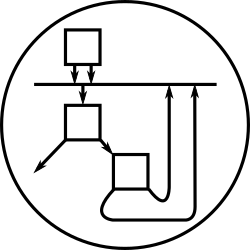TiddlyWiki, Quining, and Smalltalk
This page is a mirrored copy of an article originally posted on the (now sadly defunct) LShift blog; see the archive index here.
Thu, 12 June 2008
Yesterday I visited Osmosoft, the developers of TiddlyWiki, to chat about getting some DVCS-like functionality into TiddlyWiki. Jeremy mentioned in passing that TiddlyWiki is, if you squint, a slightly cheating kind of a Quine. It struck me this morning that TiddlyWiki has strong similarities to another famous almost-Quine, the Smalltalk system.
TiddlyWiki is a composition of
- a HTML page, with embedded Javascript, acting as a container for the pieces of content, called tiddlers, in the wiki;
- some tiddlers, specially marked as plugins, containing source code permitting extension of the skeleton system; and
- other tiddlers containing wiki markup text.
The HTML/Javascript container of the tiddlers (along with the web browser it runs on!) is like the Smalltalk virtual-machine. The tiddlers themselves are the live objects in the system. The process of running the embedded plugin scripts is the same as running Smalltalk’s post-image-load startup hooks. The plugins-in-tiddlers is the same as the source-in-the-image. The process of saving the TiddlyWiki instance to disk is the same as a Smalltalk instance extracting its live object graph and serializing it to disk.
The main difference I can see is that Smalltalk doesn’t carry so much of its VM around with its images: like Smalltalk’s reliance on an external VM being present, TiddlyWiki can rely on the browser being present for a big chunk of its VM, but has to carry the bootstrapping container code bundled with the stored tiddlers/live-objects. Also, TiddlyWiki instances are (these days!) constructed by a special assembly process from small, separate text files checked into Subversion, whereas Smalltalk images were not historically constructed from scratch very often at all. Finally, TiddlyWiki’s boot process is heavier than Smalltalk’s, because it’s forced by the browser to recompile all the sources in the system, where Smalltalk gets away with having bytecode in the image alongside the sources.
